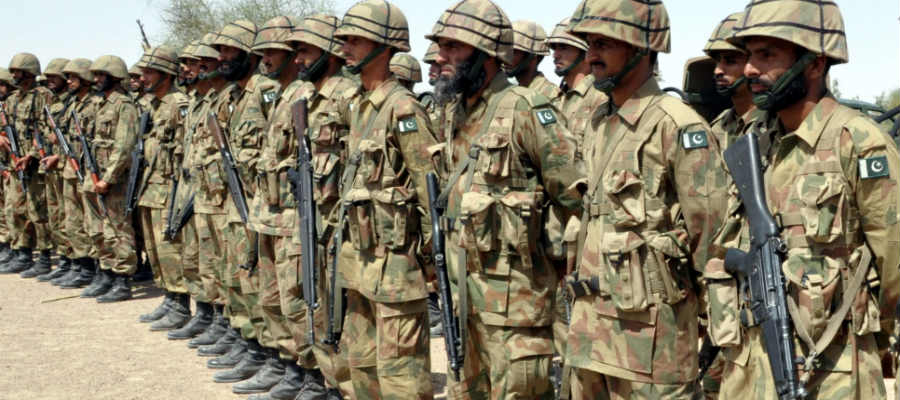BY NIDHI BHARDWAJ
When Chen Bingde, the Chinese army chief, and his 15-member delegation landed in Kathmandu on 23 March 2011, he brought with him a loyalty-trust proposal for the pro-China ruling coalition of the Communist Party of Nepal (Unified Marxist Leninist) aka CPN-UML and the Unified Communist Party (Maoist) under Prime Minister Jhala Nath Khanal.
Bingde laid down a clear cut proposal: Deport Tibetan refugees to China to prevent the rise of a militant Tibetan émigré force.
Annually, on an average 2,500 Tibetan refugees escape into exile. They cross treacherous snow-clad passes into Nepal facing grave threats to their lives. The number of refugees appearing at the Kathmandu reception center has decreased significantly, from a peak of almost 3,000 per year in 2006 to 2008 to 770 in 2010.
They transit through Nepal en route to Dharamsala in northern India where their spiritual leader, the Dalai Lama and the Tibetan government-in-exile are based. Subsequently, they settle down in various Tibetan settlements across India.
Nepal and Tibet Autonomous Region (TAR) of China have a common border of 1,414 km with 34 major passes between the two. Till 2008 Nepal adhered to the “Gentlemen’s Agreement”, an informal compact established in 1989 with the UNHCR, which automatically assumes cooperation among Nepalese police and government officials with the UNHCR in providing for the safe transit of Tibetan refugees through Nepal and onward to India.
But the political ascendancy of Nepalese Maoist and Communist parties and their assertion of “One-China” policy, Kathmandu dumped the “Gentlemen’s Agreement” in 2008. The government stopped giving refugee status to Tibetans and with this they lost their right to safe passage through Nepal. In fact, Nepalese police and Maoist cadres were ordered to spot and arrest Tibetan refugees escaping into Northern Nepal, and hand them over to the immigration authorities.
Since 2008 China’s communist regime has used its considerable foreign exchange reserves and enormous amounts of liquidity to fund Nepal government to crackdown on Tibetan refugees living in the Himalayan country. On 19 December 2010 secret US Diplomatic Cables published by ‘WikiLeaks’ revealed that “Chinese government rewards Nepali forces by providing financial incentives to officers who hand over Tibetans attempting to exit China”. This cable dated 22 February 2010 originated from the US Embassy in New Delhi, which described a meeting of the source with the Embassy’s Political Officer on 4 February 2010.
It is important to note that the Chinese military chief outlined his proposal to the Maoist political leadership in Nepal and not to the Nepalese Army, which is considered to be pro-India. “Stable Nepal is important not only for the stability of Asia pacific but also for the whole world,” Milan Tuladhar, the Nepali prime minister’s foreign affairs adviser, quoted Chen telling the Nepali leaders.
Whether the political and bureaucratic establishment likes it or not, China-India rivalry is rearing its head across India’s Northern borders. Senior Indian Army Generals have warned of increasing Chinese military activities and presence in Pakistan Occupied Kashmir. Chinese Army incursions along the LAC hogged the media limelight in 2010.
Now Nepal is emerging as the latest hot-spot for Chin-India rivalry. Taking advantage of India’s dithering foreign policy on Nepal and the anti-India sentiment in the Himalayan country, Beijing has moved swiftly to tackle one of its biggest insecurities—the looming threat of militant Tibetan émigrés in Nepal and India after Dalai Lama stepped down as the political leader of the Tibetan-Government-in-Exile.
By removing himself and his moderating influence from a political role and confining himself to spiritual matters, the Dalai Lama has effected a master-stroke of a strategy. With the Free Tibet movement already a global cause celebre, it is likely that a Tibetan émigré militancy will gain world-wide support and empathy.
It is crucially important to recall at this point the large-scale 2008 Tibetan protests in Lhasa and the subsequent crackdown by the Chinese military. The Tibetan protests gained global support immediately.
Keeping this context in mind, the absence of the conciliatory and tempering influence of Dalai Lama, could ignite the émigré Tibetan activism into a militant one. If that happens China would want Nepal to be on its side.
That is why Bingde during his visit to Kathmandu insisted that Nepal should be intolerant to any “anti-Chinese activity”. He also announced that it was unacceptable for Beijing to accept any “third party interference” in Sino-Nepalese relations. To win over the pro-India Nepalese Army he declared 20 million USD assistance to provide medical and construction equipment to the army.
Earlier in 2008 Lieutenant General Ma Xiaotian, deputy commander of PLA gave 2.6 million USD in non-lethal military aid to the Nepalese Army and in 2009 the PLA handed over 3 million USD for a hospital; Nepal’s Annapurna Post quotes an unnamed Nepal Army source as follows: “Huge Chinese support has come at a time while India is only making repeated assurances of extending support. The Chinese support is very important for us.”
Chinese official media reported that General Chen Bingde “discussed with Nepal Army commanders ways to make efficient use of its newly-build `Peace Airport’ near the base of Mount Everest, and a new China-Nepal road, which will become operational soon.”
Clearly, Bingde’s visit has generated tremendous momentum to scale-up the ‘Comprehensive Cooperation’ agreement between Beijing and Kathmandhu. “We have made this visit for the purpose of further enhancing mutual understanding, promoting friendship, strengthening cooperation and enhancing the China- Nepal Comprehensive Partnership of Cooperation featuring ever- lasting friendship to move ahead constantly,” Chen said.
So the ‘Bingde Loyalty-Test’ is being followed in letter and spirit by the Nepalese government. “Nepal has agreed to deport Tibetan arrestees to the Chinese officials”, said Bijaya Poudel, the Nepali Chief of the Tatopani Immigration Office.
Nepal is home to approximately 20,000 Tibetan refugees who have long been protesting against China’s Tibet crackdown. These protests have been a perennial source of embarrassment for the Nepali government, as they have consistently failed to oblige China by stopping them.
So far the Nepali authorities only used to assault, threaten the protesters with deportation to China to discourage future protests but having failed at that, this new announcement clearly goes to show that Nepal has buckled under pressure from Beijing to produce results.
If the existing restrictions for the Tibetan community in Nepal weren’t enough, on 13 February 2011 the Nepal police prevented Tibetan community elections, the opportunity to vote for a new government in exile, by destroying the polling stations. They seized ballots and all other election material.
A few days back the European Parliament had urged the Nepal government to respect the rights of Tibetans in Nepal. Gathering support from all the major political parties of the house, the European Parliament adopted a resolution, calling on the government of Nepal to respect the democratic and human rights of the Tibetan community living in the country. The resolution says that Tibetans have a right to participate in democratic rights, and that this is a “fundamental right of all citizens that must be upheld, protected and guaranteed in every democratic state”.
The United States openly criticized Nepal, when it released the ‘2010 Human Rights Report’, a few days back.
The report highlighted that: ‘For the first time since 2003, there was a confirmed forcible return of three Tibetans from Nepal In the report concern was raised over Nepal’s forcible return of Tibetans attempting to flee Chinese rule.
Disregarding international concern, China and Nepal went ahead with their scheduled border security meeting last Sunday (10 April 2011). The meeting held on the Nepal-Tibet border town of Khasa (Zhangmu), located in Nyalam County, was led by joint secretary at the Nepalese Home Ministry, Jaya Mukunda Khanal, and vice chairman of TAR, Eazy Gaozi.
The discussions led to officials of Nepal and China agreeing to coordinate closely with each other on security affairs in the future. It suggests that there will be an increase of forcible return (also defined as “refoulement” under international law) of Tibetans to China.
Beijing’s new Tibet strategy makes it mandatory to have Kathmandu as its only ally. In fact, there is enough evidence emerging to suggest that Nepal is progressively moving towards becoming China’s client-state.
(Nidhi Bhardwaj is a strategic affairs writer affiliated to Three Headed Lion Research & Information Services. This article first appeared on the website of Centre for Land Warfare Studies on April 15, 2011)


